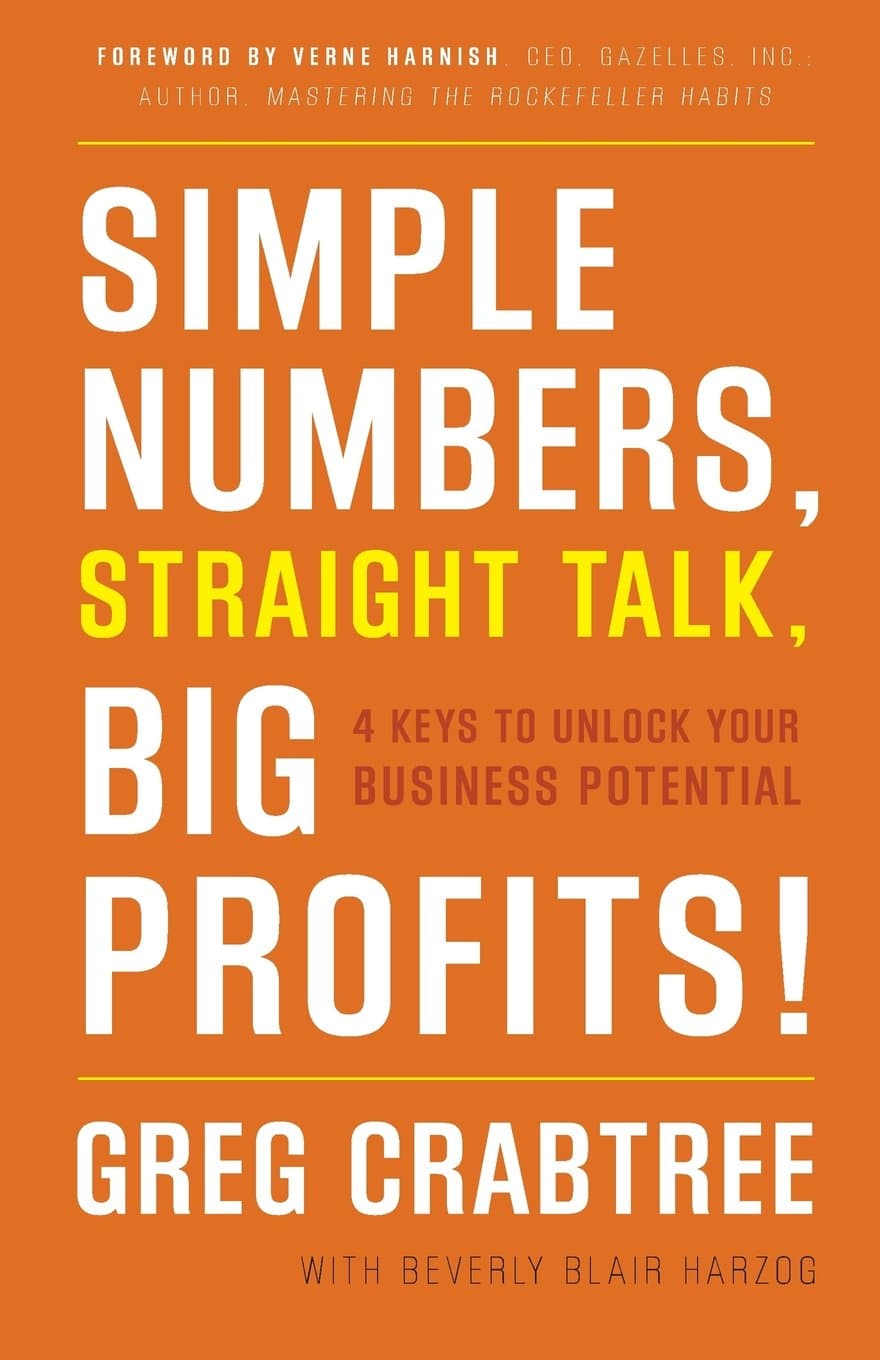
Simple Numbers, Straight Talk, Big Profits!
By: Greg Crabtree
Category: Finance
Finished:
Highlights
Think of it like this: If you got run over by a bus today and your heirs decided they would keep the business going in your absence, what would they have to pay someone to do your job?
Consider working in a limited capacity at a lower wage as you transition out of active management.
Profitability levels :
- 5 percent or less of pretax profit means your business is on life support.
- 10 percent of pretax profit means you have a good business.
- 15 percent or more of pretax profit means you have a great business.
Between $1 million and $5 million in revenue is what I refer to as the black hole. This is the time in your business growth when you're forced to add staffing and infrastructure before you can really afford to. Even if you try to add it as late as possible and maybe even pay for only part-time help, at the end of the day you're going to drive profitability down and risk destroying your business.
Like most entrepreneurs, they think the solution to the problem of their lack of pretax profit is to grow.
A significant component of cost creep is labor creep , which is the biggest profit sucker out there. You're doing all those little jobs and you start thinking, “Gee, I really don't like doing that. Let's hire somebody else to do that."
The Patriots pride themselves on their ability to maximize output for every dollar they spend on labor. Their success is based on knowing when to hire veteran talent and when to develop new talent. They have been effective at both. I stress the story of developing talent here because most entrepreneurs want quick success and resist training as a viable option for growth.
When you get to 15 percent pretax profit, you can add employees to drive your profit back down toward 10 percent, and then you can grow it back to 15 percent again. Your pretax profit and salaries are in flux as your salaries go up and your profit goes down. You can continue this process to get a nice upward-sloping revenue curve like Company B's earlier in the chapter.
Maintain a minimum pretax profit of 10 percent or greater as you grow to the $5 million revenue level , and leave any profits after taxes in the business to fund the growth instead of relying on debt or outside capital.
Unfortunately, the four forces of cash flow are probably in the opposite order of what you'd like them to be, but we all have to accept the fact that taxes are the top priority. The four forces of cash flow are as follows, in this order:
-
Paying your taxes
-
before you spend money on anything, you have to set the taxes aside. This is one of the most important things I tell my clients who are on a cash-basis accounting system.
-
Repaying debt
-
Reaching your core capital target (building working capital)
-
The next force of cash flow is reaching your core capital target. Recall from our earlier discussion that your core capital target is two months of operating expenses in cash and nothing drawn on a line of credit.
-
Taking profit distributions
-
If you're not saving for a big goal, then take the $100,000 distribution and look at your personal life. Do you have any debt or owe any taxes? If not, then what's your liquidity target? Most entrepreneurs who have businesses between $1 million and $5 million need to build up about $2 million of liquid, safe, core assets that give them stability no matter what they're doing in life. When you reach $2 million, you can set your sights even higher. Build a solid foundation first, and then can enjoy taking some risks.
Have your tax advisor create a simple tax calculation template that you can review each quarter, or you can download a tax calculation spreadsheet for an LLC or an S corporation from my website,www.seeingbeyondnumbers.com. The one we use is for a cash-basis business, so you can measure where you currently stand. It does quick calculations so you can get an idea of what your tax reserves should be.
In every business, each dollar spent on labor has to show a demonstrable output for gross profit. Here's a simple metric to keep in mind: If you aren't at 10 percent pretax profit, use what you learned about managing and raising your salary cap in chapter 3 to determine how much labor you need to cut or how much gross profit you need to add to get to that number, and then try not to add staff until you get to 15 percent pretax profit. This is how you control internal growth and profitability.
The second component is the labor efficiency ratio I mentioned earlier, which may range from $1.80 to $2.20 of gross profit for every $1.00 company spends on labor. If a company hits its gross profit dollar performance level and the labor efficiency ratio, profitability is almost assured to hit the bottom line. But if the company hits only the profit performance and overspends on labor to make it, the profit target is not reached, and the executive bonus is reduced or even eliminated.
Budget between 2 and 5 percent for marketing , but continually monitor if it's working and if you're getting value from the marketing. Get a better grasp on how to strategically spend the dollars.
When I speak to entrepreneurs, the most common thing I hear is: "I need a budget." My response is always, “No, you don't. You need a business model and a forecast you are willing to act on.
Take a look at the simple cash-flow model in exhibit 10.1 (a copy of the model is available at www.seeingbeyondnumbers.com).

